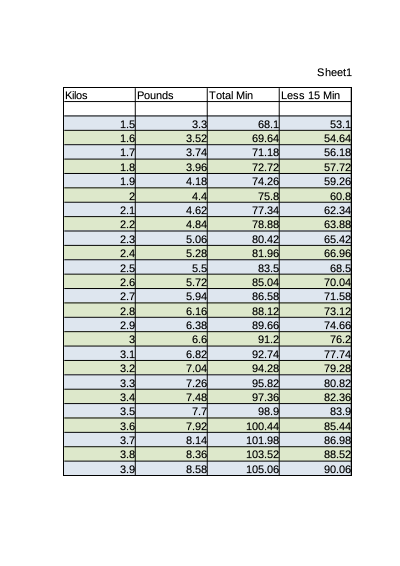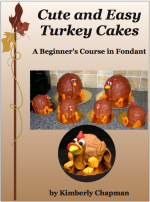[Skip my explanations and jump straight to the printable chart.]
We’ve moved to a new house and I’ve been porting over my cupboard notes to the new kitchen. By this I mean the things I keep taped up in the cupboard door above the primary cooking area for fast reference. These references have become even more important to me as I continue to suffer with Long Covid and associated brain damage (colloquially called “brain fog”), making it harder for me to remember numbers or perform calculations on the fly.
So that’s a Disabled Life Hot Tip: put the information you routinely need up in a place that you can easily access it in a way that works for you!
For many years my cupboard notes have included a table from Brown Eyed Baker converting butter measurements from US sticks/tablespoons to weight, because in the UK butter comes as a block and rarely has package markings of much use for measuring. Further, since developing lactose intolerance I now use a lactofree butter that comes in a tub so weight measuring is key. I also have a Fahrenheit to Celsius table from JavaCupcake and frequently used recipes with annotations for increased yields, converting volume to weight, etc. Over the years I’ve converted my partner to using these tables too as I showed him repeatedly how fast it was to simply open the cupboard door and look up calculations on a table even compared to asking Siri, especially since Siri is perpetually confused by his accent anyway and rarely gives him what he’s asked for.
In moving, I removed any recipes that I no longer recognised/used, and I shifted some rarely-used ones to a different cupboard door to put the ones I use most above the primary workspace. I say “recognised” because frankly most of these are hastily-typed notes designed to be smaller than common printouts, and again these are things I do all the time so I don’t need to be told to mix the dry first or other methodology stuff. I just need to remember how much stuff at what temperature for how long. So I don’t put titles on many of them, meaning if I no longer recognise it, I haven’t made it in years and probably never will again.
So here’s my current cupboard with today’s edition of whole chicken roasting times by weight, which I’ll describe further below:

We haven’t properly moved in yet so the cupboard is horrendously unorganised. We need to buy a cabinet for good dishes to get those dishes out of this and other cupboards so we can arrange ingredients here better. Everything is a hot mess right now so I really need to make my cooking more efficient!
Note that conversion tables can vary wildly by geography/type, especially for things like flour and sugar. The grams I’ve listed on my notes in the photos may not be accurate for your area and types of flour/sugar/etc. That’s why mine are hastily scribbled on recipes like this: I print the recipe with its volume measurements, get sick of cleaning measuring cups/spoons, eventually take the time to weigh a recipe out as I make it, and scribble the notes on the printout in my cupboard. Similarly if you find lovely charts (like the others at the JavaCupcake link above) of weight conversions for ingredients, understand that UK plain flour does not weigh the same as US all-purpose flour and even regional variance in US all-purpose can throw a large recipe off. Volume also is greatly affected by things like sifting, crystal size, etc.
Basically my point is conversion charts are great but be careful and understand your ingredients/recipes from the start to avoid failures. And if you’re cribbing off my cupboard door notes that’s totally fine, I don’t mind, but understand my notes may not apply to your ingredients!
What I’ve added today should apply internationally, though: that blue-and-green table for roasting whole chickens. This is based on Julia Child’s much lauded calculation that has always worked for me in any country I’ve lived in, so long as the chicken is fresh and hasn’t been frozen (thawing is all well and good but every failure I’ve had with this method has been with a chicken that was frozen and the joints had not fully thawed even though the meat had).
Child’s calculation is this: [weight of the whole chicken in pounds] times 7, add 45, that gives you the total minutes. Her method is to start it at a pre-heated oven at 425F, which is 218C but I go by my handy chart that rounds it to 220C. Roast it at that high temperature for 15 minutes, then drop the temperature to 350F / 180C for the remaining time of the calculation. If you’re using a fan/convection oven, drop the temperature accordingly by your oven’s instructions. In my case with UK fan ovens that means taking 10c off the above numbers, so I start my fan oven at 210C and then drop it down to 170C. And again, as long as the chicken has never been frozen either by me or an unscrupulous grocery store selling frozen birds as fresh (it happens!), this recipe always works for me.
My chicken preparation method is to take it out of the bag it comes in already tucked and tied, do not wash (this spreads germs around your kitchen and removes nothing from the chicken!), just pat dry with paper towels, put it in one of our Lodge cast iron pans (bigger bird in bigger pan), pour olive oil all over it and flip it all around to rub the oil everywhere, salt it all over like crazy and a bit into the cavity, leave breast up and roast by the chart. I do not baste it at all, but I do rotate the pan roughly every 15 minutes. We check for doneness with a high-quality instant-read thermometer when it comes out, make a foil tent over it on a cutting board, and then I make a pan gravy. If you want instructions on making a pan gravy ask in comments and I’ll do a separate post.
Again, in the beforetimes before I had Long Covid I could remember the cooking formula easily. Now I can’t. Also in the previous house my computer was in the kitchen; now it’s across the house. So today since I’m roasting a chicken for dinner, I decided to do myself a favour and whip up a printable little chart, and that’s what I’m sharing with you today.
I am using the conversion from kilos (how chickens are sold here in the UK) to pounds based on one kilo being equivalent to 2.2 pounds. This is a rounding, as the actual calculation is 1:2.20462 and I used to do it via Google calculate (you do know if you type math into the Google search bar it spits out results, right?). But the chart came out ugly like that and I have neither the time nor spoons to learn how to make Calc do rounding so I pre-rounded my calculation to a fairly standard culinary value of 1:2.2. I checked the chart before and after and it’s only fractions of seconds of difference.
I also truncated the chart for probable whole chicken weights. The whole chickens we’ve been buying in the US and the UK for decades almost all fall between 2-3kg / 4-6lbs, so I added some rows before and after for anomalies but to be honest I haven’t tested the formula at the low and high points of this chart, nor do I ever cook game hens or turkeys so I cannot guarantee this formula/chart works outside of those parameters. This table is not suitable for cut-up chicken parts.
I made it blue and green because I do not have colour blindness and I like those colours. I think if you greyscale print it’ll come out fairly evenly grey.
I have not bothered to brand this or label it or anything because I am tired. If you find this useful please share it around and link back, but honestly I’m just happy if this is useful to anyone else. If you want to take the raw Libreoffice Calc file and alter it to your needs, here you go. If you want it stripped back further to before I added colours, here’s that version. Enjoy. 🙂












